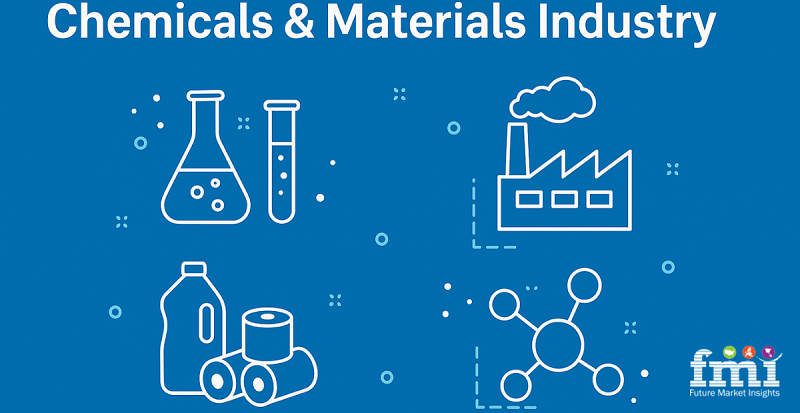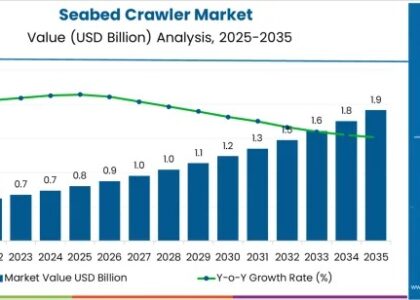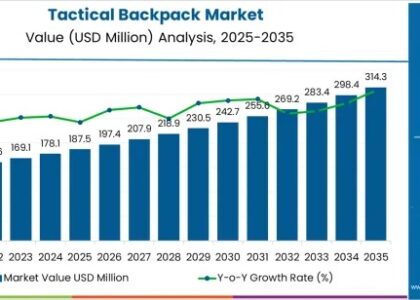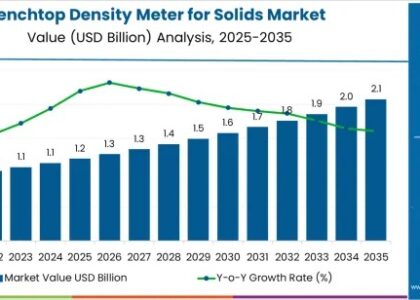The automotive industry has been under constant pressure to adopt environmentally sustainable practices, especially in the field of coatings. Waterborne automobile coatings have emerged as a promising solution, offering both eco-friendly benefits and high-performance characteristics. While the widespread benefits of waterborne coatings, such as reduced VOC emissions and improved sustainability, are well-known, several untapped areas of innovation are shaping the future of this technology. This article delves deeper into the lesser-discussed facets of the Waterborne Automobile Coating Market, shedding light on emerging technologies, evolving market dynamics, and their potential to revolutionize the industry.
𝐌𝐚𝐤𝐞 𝐈𝐧𝐟𝐨𝐫𝐦𝐞𝐝 𝐃𝐞𝐜𝐢𝐬𝐢𝐨𝐧𝐬 – 𝐀𝐜𝐜𝐞𝐬𝐬 𝐘𝐨𝐮𝐫 𝐒𝐚𝐦𝐩𝐥𝐞 𝐑𝐞𝐩𝐨𝐫𝐭 𝐈𝐧𝐬𝐭𝐚𝐧𝐭𝐥𝐲! https://www.futuremarketinsights.com/reports/sample/rep-gb-746
The Technological Leap – Non-VOC Waterborne Coatings and Their Impact on Vehicle Durability
Non-VOC (volatile organic compound) waterborne coatings are a significant departure from traditional systems. Traditionally, vehicle manufacturers have relied on solvent-based coatings to provide durability and long-lasting finishes. However, as the demand for eco-friendly alternatives rises, non-VOC waterborne coatings have been developed to deliver superior scratch resistance, UV protection, and overall performance while maintaining sustainability. These non-VOC formulations use advanced materials such as polyurethane and acrylic polymers that are not only more environmentally friendly but also extend the lifespan of automotive surfaces.
One example of a manufacturer adopting non-VOC waterborne coatings is BMW, which has integrated these coatings in their production lines. The use of these coatings in BMW vehicles has resulted in improved durability against everyday wear and tear, including resistance to stone chips and environmental contaminants. The superior performance of non-VOC waterborne coatings also means fewer maintenance requirements for consumers, driving the overall value of the vehicle while reducing its carbon footprint.
In a broader context, non-VOC waterborne coatings have the potential to set a new standard in the industry, combining eco-friendliness with the high-performance expectations consumers have come to demand. This breakthrough technology represents a major shift in the market, highlighting how sustainability can drive innovation in vehicle durability.
Hybrid Coatings – Merging Waterborne with Powder Coatings for Optimal Efficiency
Hybrid coatings, which combine the benefits of waterborne and powder coating technologies, have been a recent trend in automotive manufacturing. While waterborne coatings provide excellent surface finishes and lower environmental impact, powder coatings are renowned for their superior durability and thickness. The hybrid approach seeks to optimize both cost-effectiveness and performance by incorporating the benefits of each.
𝐔𝐧𝐥𝐨𝐜𝐤 𝐂𝐨𝐦𝐩𝐫𝐞𝐡𝐞𝐧𝐬𝐢𝐯𝐞 𝐌𝐚𝐫𝐤𝐞𝐭 𝐈𝐧𝐬𝐢𝐠𝐡𝐭𝐬 – 𝐄𝐱𝐩𝐥𝐨𝐫𝐞 𝐭𝐡𝐞 𝐅𝐮𝐥𝐥 𝐑𝐞𝐩𝐨𝐫𝐭 𝐍𝐨𝐰: https://www.futuremarketinsights.com/reports/waterborne-automobile-coating-market
For example, in the commercial vehicle segment, manufacturers like Ford and Volkswagen have started utilizing hybrid coatings to balance the high durability required for large-scale vehicles with the eco-friendly aspects of waterborne technology. By applying a base layer of powder coating followed by a waterborne topcoat, manufacturers are able to achieve both optimal corrosion resistance and a sleek, long-lasting finish. This hybrid method also offers significant cost reductions compared to using two separate, traditional systems.
Hybrid coatings represent an exciting frontier in the Waterborne Automobile Coating Market, providing manufacturers with the flexibility to meet various environmental, aesthetic, and durability demands. This technique is particularly useful in industries where both sustainability and high performance are critical, including commercial vehicle manufacturing and electric vehicle production.
Advanced Waterborne Coating Technologies – Nano Coatings for Corrosion Resistance
One of the lesser-discussed advancements in the Waterborne Automobile Coating Market is the application of nanotechnology to waterborne coatings. Nano coatings offer excellent resistance to corrosion, dirt, and environmental factors, significantly improving the lifespan and aesthetic appeal of vehicles. This is particularly important as the automotive industry faces rising demands for both functional performance and visual appeal.
The incorporation of nano materials, such as silica nanoparticles, into waterborne coatings has proven effective in enhancing the corrosion resistance of automotive surfaces. For instance, a leading manufacturer like Mercedes-Benz has begun using nano-coated waterborne solutions in their luxury vehicle lines to provide superior protection against road salts, pollutants, and extreme weather conditions. The application of nano coatings results in a hydrophobic surface, which repels water and contaminants, thus reducing maintenance costs while preserving the car’s appearance over time. This technology is expected to become increasingly important as manufacturers aim to enhance the durability of vehicles in regions where harsh environmental factors prevail.
In addition to corrosion resistance, nano coatings contribute to improved scratch resistance and UV stability. These features make them an ideal choice for high-end, performance, and electric vehicles (EVs), where surface durability is as important as aesthetic appeal. The use of nanotechnology in waterborne coatings is set to redefine how automotive manufacturers approach both the design and longevity of their vehicles.
Coatings, Inks, Adhesives & Sealants Industry Analysis: https://www.futuremarketinsights.com/industry-analysis/coatings-inks-adhesives-and-sealants
Environmental Regulations and Their Influence on Market Growth
The impact of environmental regulations is a well-known driver of change in the waterborne coatings market, but its specific influence on automotive coatings remains underexplored. As governments worldwide tighten emissions standards and implement stricter VOC limits, automobile manufacturers are compelled to innovate in order to meet these regulations.
For example, in Europe, the REACH (Registration, Evaluation, Authorisation, and Restriction of Chemicals) regulation has imposed strict limits on VOC emissions from coatings. This has led to a significant push towards waterborne alternatives, as these coatings emit far fewer VOCs compared to solvent-based coatings. Similarly, in the United States, the EPA (Environmental Protection Agency) has also set stringent limits on VOC emissions from automotive coatings, accelerating the adoption of waterborne technologies in both passenger and commercial vehicles.
The demand for waterborne coatings is further fueled by increasing awareness of environmental concerns, such as climate change and air pollution. As automotive manufacturers strive to meet these regulations while maintaining competitive performance, the waterborne coatings market is expected to see accelerated growth, particularly in regions with rigorous environmental standards. The continued evolution of regulatory frameworks will ensure that the adoption of waterborne coatings remains a key component in the ongoing transformation of the automotive industry.
Consumer Preferences and the Shift Towards Eco-Friendly Automotive Products
In recent years, there has been a significant shift in consumer preferences toward environmentally conscious products. This change is influencing the automotive sector as consumers demand greener solutions in the cars they buy. This shift is particularly evident in the growing popularity of electric vehicles (EVs), which often feature waterborne coatings due to their environmentally friendly nature.
As more consumers prioritize sustainability in their purchasing decisions, automotive manufacturers are responding by adopting eco-friendly coatings that reduce environmental impact without compromising on vehicle performance. Tesla, for example, is one of the most prominent car manufacturers utilizing waterborne coatings in its vehicles, aligning with the company’s commitment to sustainability. Waterborne coatings are integral to Tesla’s production process, as they not only meet the stringent environmental standards but also provide a high-quality finish that enhances the visual appeal of their vehicles.
This consumer-driven demand for sustainable products is expected to continue driving growth in the Waterborne Automobile Coating Market. As manufacturers respond to the growing need for eco-conscious solutions, the use of waterborne coatings will play an essential role in shaping the future of automotive manufacturing.
Key Segmentation
By Type:
- Acrylic Coatings
- Polyester Coatings
- ALKYD Coatings
- EPOXY Coatings
- Polyurethane Coatings
- PTFE Coatings
- PVDF Coatings
- PVDC Coatings
- Others
By Application:
- Architecture
- Automobile
- General Industrial
- Protective
- Wood
- Marine
- Packaging
- Coil
- Others
By Region:
- North America
- Latin America
- Western Europe
- Eastern Europe
- APEJ
- Japan
- Middle East Africa
About Future Market Insights (FMI)
Future Market Insights, Inc. (ESOMAR certified, recipient of the Stevie Award, and a member of the Greater New York Chamber of Commerce) offers profound insights into the driving factors that are boosting demand in the market. FMI stands as the leading global provider of market intelligence, advisory services, consulting, and events for the Packaging, Food and Beverage, Consumer Technology, Healthcare, Industrial, and Chemicals markets. With a vast team of over 400 analysts worldwide, FMI provides global, regional, and local expertise on diverse domains and industry trends across more than 110 countries.
Contact Us:
Future Market Insights Inc.
Christiana Corporate, 200 Continental Drive,
Suite 401, Newark, Delaware – 19713, USA
T: +1-845-579-5705
For Sales Enquiries: sales@futuremarketinsights.com
Website: https://www.futuremarketinsights.com
LinkedIn| Twitter| Blogs | YouTube
Visit Blog Site: https://sites.google.com/view/futurechemicalblog/chemical-insights






